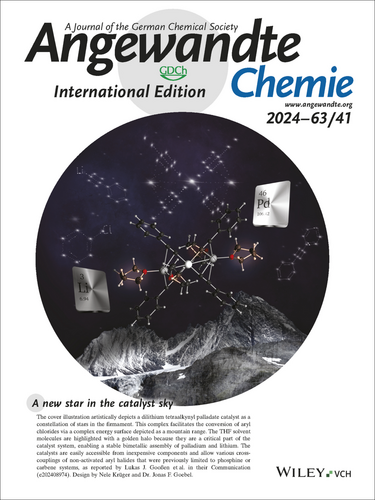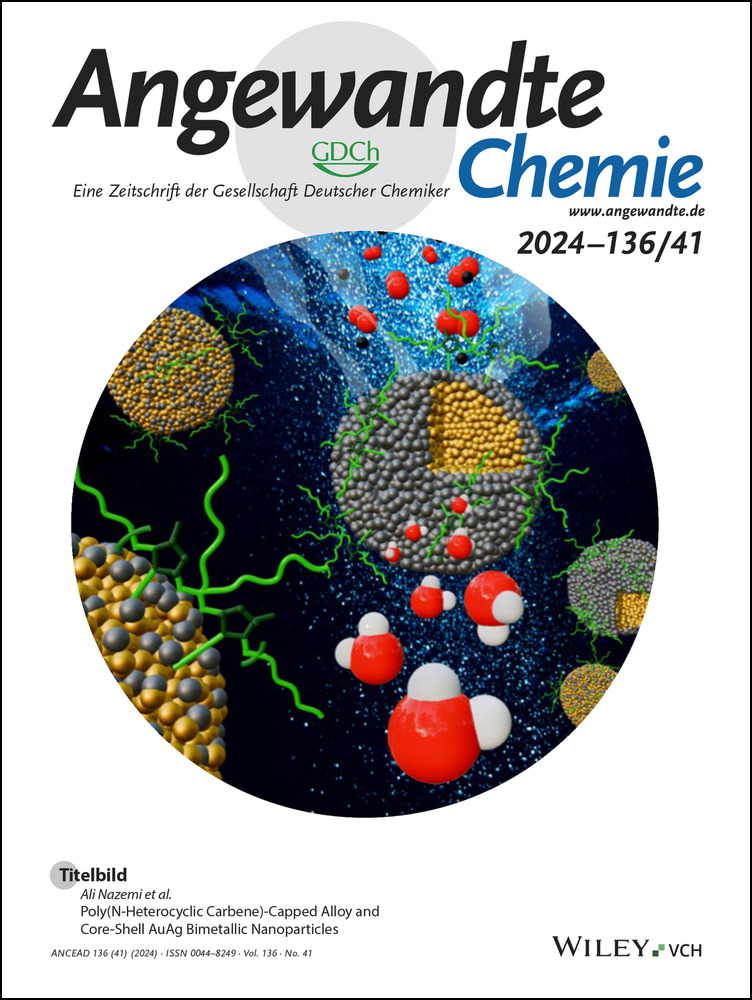Inside Back Cover: Coupling of Aryl Chlorides with Lithium Nucleophiles Enabled by Molecularly Defined Alkynyllithium Palladium Catalysts (Angew. Chem. Int. Ed. 41/2024)
Graphical Abstract
A new star in the catalyst sky The cover illustration artistically depicts a dilithium tetraalkynyl palladate catalyst as a constellation of stars in the firmament. This complex facilitates the conversion of aryl chlorides via a complex energy surface depicted as a mountain range. The THF solvent molecules are highlighted with a golden halo because they are a critical part of the catalyst system, enabling a stable bimetallic assembly of palladium and lithium. The catalysts are easily accessible from inexpensive components and allow various cross-couplings of non-activated aryl halides that were previously limited to phosphine or carbene systems, as reported by Lukas J. Gooßen et al. in their Communication (e202408974). Design by Nele Krüger and Dr. Jonas F. Goebel.





